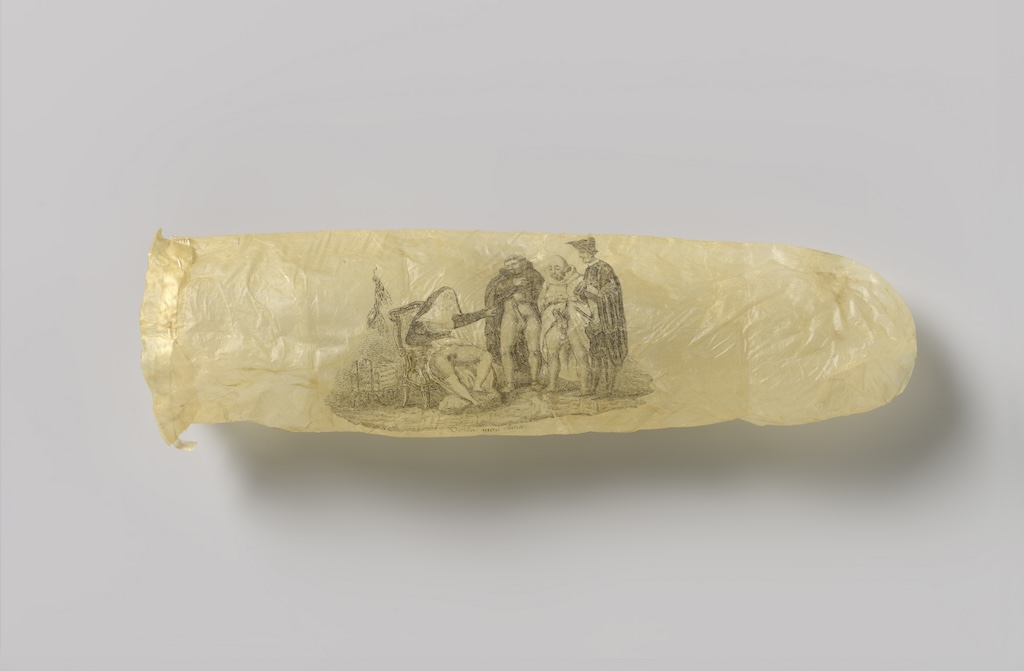The Rijksmuseum’s latest acquisition—a nearly 200-year-old condom made from sheep intestine—has prompted outrage from a conservative Christian group in the Netherlands, which has called its display “a grotesque insult to God, the Catholic Church and the entire Dutch nation,” according to the Art Newspaper.
On view in the museum’s print room as part of a small exhibition on 19th-century sex work, it features an erotic illustration of a seated nun, her legs spread apart and her habit hiked up around her waist, and three very enthusiastic clergymen. Beneath the image, the caption reads Voilà mon choix—“This is my choice”—a lascivious parody of the Judgement of Paris myth, in which a mortal must choose the most beautiful goddess. In this version, the nun appears to have made her pick among three conspicuously aroused priests. She’s pointing right at him.
Related Articles

The artifact was likely a brothel souvenir and is believed to be one of only two known examples to have survived. Rijksmuseum co-curator Joyce Zelen told the Art Newspaper that the object was printed directly onto the sheep’s appendix—a method far less forgiving than paper. “Normally, an etching you can print a few thousand times, but paper is easier to print [on] than sheep’s appendix,” she said.
The protest, organized by Stichting Civitas Christiana and its youth wing TFP Student Action Europe, included 11 demonstrators outside the museum last week and a circulation of 5,000 flyers. The group claims the condom was originally created as anti-Catholic propaganda during the French Revolution.
In a separate op-ed, a Dutch right-wing outlet suggested that similar satire involving Mohammed would be “unthinkable” in the museum.
Zelen, however, sees the controversy as misplaced. “Mocking religion is as old as religion itself,” she said. “It’s meant to be funny.”
The Rijksmuseum show explores a period when prostitution was legal in the Netherlands and public health efforts were focused on curbing rampant syphilis. Condoms made from animal byproducts were discreetly sold in barbershops and seafront stalls. The museum’s print room, which houses more than 750,000 works on paper, acquired the object at auction earlier this year. It will remain on view through November.

